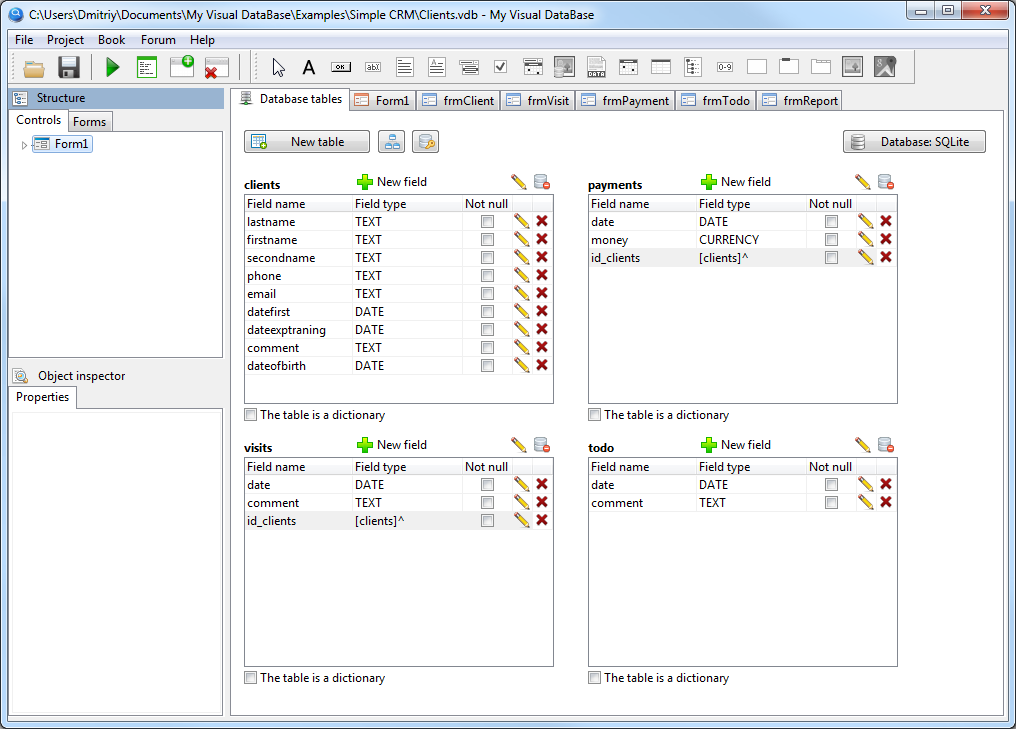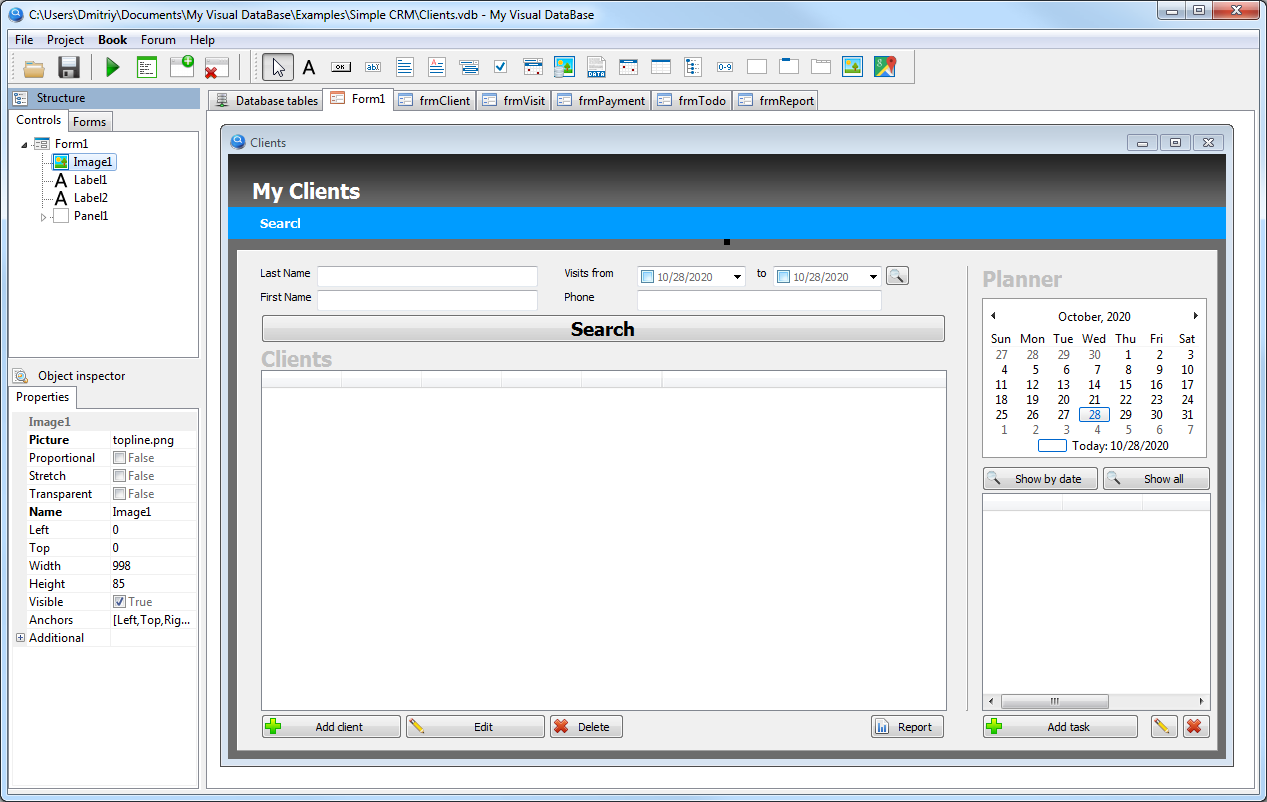How it works?
Here you will learn the basic principles that are used when creating applications using My Visual Database
1. Creating a database structure.
Since your application will be designed to work with the database, you need to create a structure of your database, which will store the information. Examples of this information may be: Clients, Payments, Visits, etc.

To correctly create a database structure, you need to know the basic principles of database design. If you have no experience in creating a database, I strongly recommend that you read the material on this link, namely, the first chapter "1.Introduction".
For more information on how to create a database structure in My Visual Database, see "Database design".
2. Creating a user interface
In order to manage the data, you need to create a user interface. Using the user interface, you can: search, print, calculate, create, edit or delete information from the database. The user interface is a set of forms and components.

The first form is the main one (Form1), which is what you will see when you launch your application.
Usually, the first (main) form has components that allow you to find information and display it in a table. Also on the form there are buttons to create a new record in the database or to edit/delete an existing one. Creation or editing of records is performed on other forms. This user interface principle is recommended, but nothing prevents you from using a different approach.
Next, you need to configure the components on the form. For buttons, you need to select an action, for example: Search, Create record, Show record, Delete record, etc.
As a rule, it is enough to specify a table name and a field in the database for the components intended to enter information, thus the component communicates with the database.
If the built-in actions for buttons are not enough for you, using scripts, you can implement almost any functionality in the Object Pascal programming language, read more about it in the Scripts section.